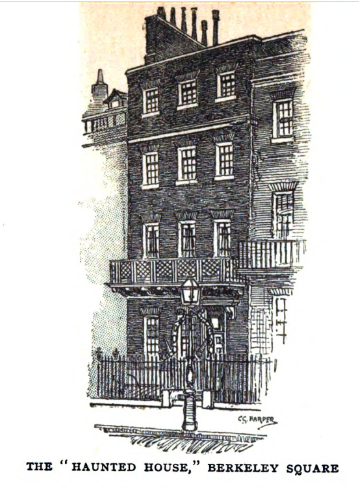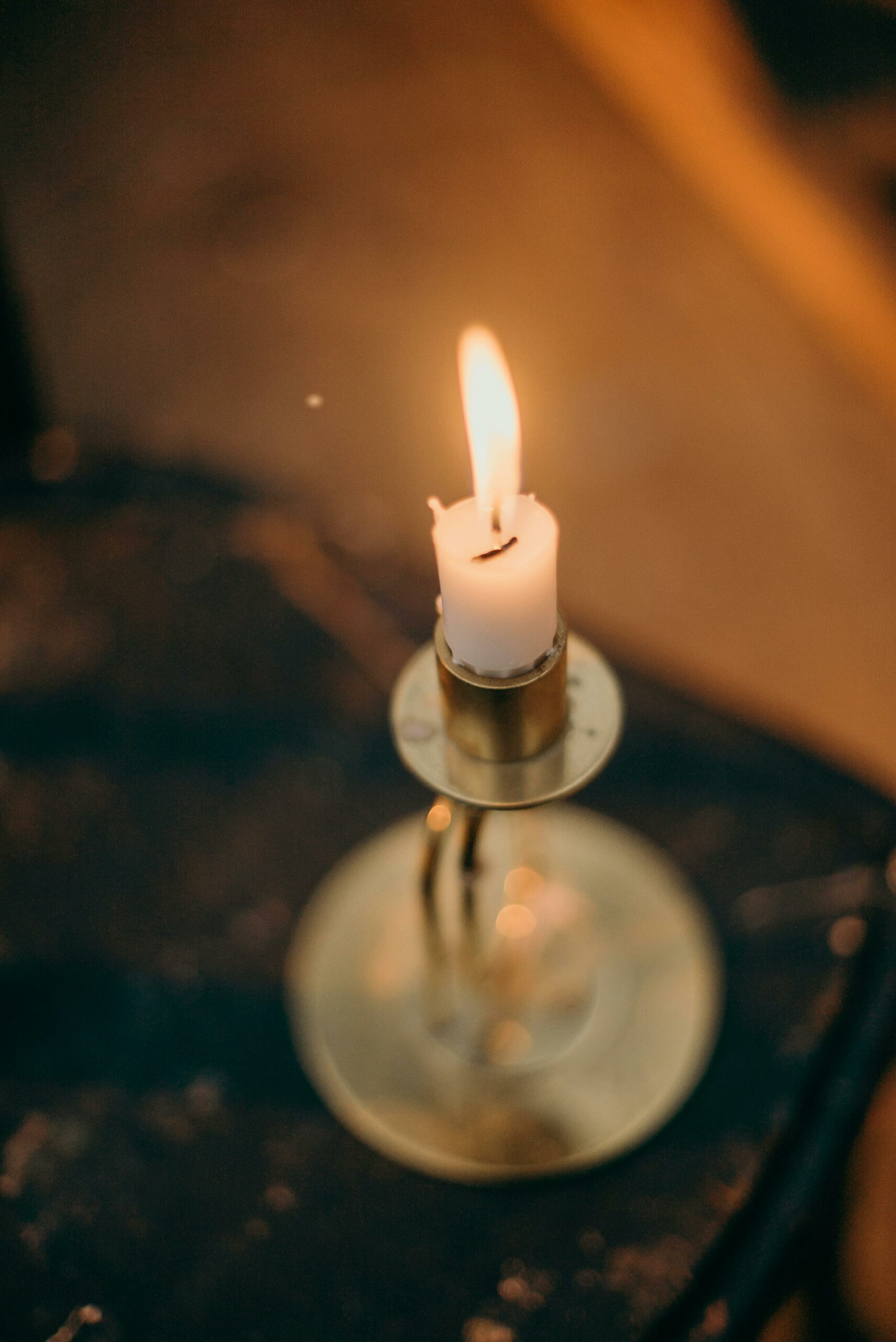50 Berkeley Square: The Scariest House in London
Welcome to Weird Wednesday! We’re about to spend a night in what Victorian England believed to be the most haunted house in London. Doesn’t that sound fun?
When I was a kid, I read The World’s Most Famous Ghosts, by Daniel Cohen. Unfortunately, this was before I realized that printing something in a book does not automatically make it true. I believed every terrifying story, and to my mind, the scariest was 50 Berkeley Square. The book said that one night in 1887, two sailors who needed shelter broke into the house and attempted to sleep there. In the morning, one was dead on the street outside, his face frozen in a look of terror. The surviving sailor blamed the house.
So let’s go on in, shall we?
50 Berkeley Square is a townhouse in Mayfair, London, built in 1750. Nowadays, it is not known for being haunted. In fact, for many years it was actually a bookshop [great pictures at this site]. The first few owners of the house, including Prime Minister George Canning, had no issues. The trouble only started when a man named Thomas Myers moved in.
Legend says Myers had been rejected by a fiancée, and fell into a depression. We don’t know about that, but what is true is that from 1859 until the 1870’s Myers slept during the day and roamed his house at night holding a candle. He never left the premises, and the house fell into disrepair around him. Supposedly, after death, he continued to wander about with his candle. Which is creepy, yes, but not really terrifying. But Myers is not the only thing said to be in the house.
The most haunted room in the most haunted house in London is the attic. Why? Well, you’ve got three choices: a young woman who committed suicide by throwing herself out the attic window to escape an abusive uncle, an insane young man locked inside the attic and fed through a hole in the door, or a little girl killed by a cruel servant. The ghost shows up as brown mist or a vaguely person-shaped white mist, which might be the reason nobody knows who this poor person is.
But lest you think brown mist makes for an underwhelming ghost, let me say this: whatever is in the attic is the thing that frightens people to death. The deadly attic stories are a confused muddle, but we’ll try to make some headway.
Supposedly, one night a man (possibly Lord Lyttleton) spent the night in the attic and fired his gun at a ghost who appeared to him. The bullets may have disappeared. Others fared worse: a maid died of fright after a brief visit to the attic, and some other guy (possibly named Captain Kentfield) decided to try his luck overnight. The owners gave him a bell: he was to ring once to show he was fine, and twice to summon help. In the middle of the night, the bell ran furiously. They found the captain alive, but too scared to speak, and he was never the same afterwards. And of course, there are our ill-fated sailors just trying to get out of the rain.
So either these folks had a really strong aversion to brown mist, or there’s something else in the house, and nobody who’s seen it has been able to say what it looks like.
What is the truth? Most likely, Thomas Myers was an unfortunate victim of untreated mental illness, and the fact that the house was dilapidated and a candle moved around every night was enough for London to declare the place haunted. All the rest is just a good story. Wish I’d known that as a kid.
And now for some haunting writing prompts!
- The lion, the witch, and the attic. So the bit about locking a person in the attic on some awful excuse and feeding them through a hole in the door is…extreme. (And impractical.) But it’s a beloved horror trope nonetheless: either the victim becomes a horrifying ghost, or probably worse, the horrifying ghosts are already in the attic while the person is trapped up there. But what if those ghosts were friendly, or at least, not antagonistic? What if the victim actually had a good time up there, because the ghosts let him travel the land of the dead and have adventures, either terrifying or fun?
- Dead men don’t tell tales. One of my absolute favorite horror tropes is the one where a person goes from normality to complete terror in a very short amount of time in a haunted location. What the hell (literally) could that person have seen? I’m fascinated by stories that describe the events and those that leave them in shadow. In the case of 50 Berkeley Square, you’ve got multiple people who can’t spend a full night in the house, and the maid, who lasted maybe an hour (a lot like the maid and others in the movie 1408). Let your imagination go wild. What is in that house? Once you figure it out, you can either tell your readers, or leave them wondering.
-
Hold my beer. It’s funny how when you say things like “Nobody can spend a night in this house,” you get a long line of brave idiots volunteering to do exactly that. (There is a related trope, where they absolutely do not volunteer, such as in the story The Vampire and St. Michael, which I found when researching my post on vampires being compelled to count objects.) There are various possible motivations for a character willing to spend the night in a haunted house. It could be money or treasure (as in the movie House on Haunted Hill), bragging rights, an attempt to “cleanse” the house, overconfidence, or curiosity. As we said in the last prompt, the idea that someone can experience something life-altering in a very short amount of time is desperately fascinating. Some people are willing to risk death to find out what it is.
- A fixer-upper. 50 Berkeley Square is in fine condition today, so obviously, there must have been extensive renovations over the years, especially after Thomas Myers was unwilling or unable to keep the house in good order. You could have a plot centered around renovations to a haunted house (such as in The Haunting of Hill House TV series). What might people find there? A skeleton? Treasure or treasure maps? Books of black magic? Hidden rooms? Typically, what’s found helps explain why the house is haunted, but you could have a completely unrelated mystery taking place in a very unfortunate setting. Say you’re trying to track down a former owner of the place because you found his love letters in the wall during renovations, but every time you go into the library to look him up, a dead nun randomly throws books at you. Or maybe the house wasn’t haunted before, but a week ago some neighborhood kids sneaked into the backyard and summoned a demon with a ouija board, and now he’s got opinions on what color you’re painting the den.
- Hill House, not sane. A lot of haunted house stories follow the trope of a house born bad, as in Shirley Jackson’s The Haunting of Hill House (the book this time). This idea goes the opposite way of 50 Berkeley Square, which is said to be haunted because bad things happened there, as opposed to bad things happening there because the house is haunted. So what could make a house bad? Rose Red and Poltergeist posit a house built on burial grounds (note: watch out for anti-indigenous racism with this trope). Irish myths warn against building on ground sacred to fairies. Haunted houses are often cast as characters with their own personalities, so you could have a house born without empathy or compassion, or a house that simply wants to be empty and never gets its wish.
Thanks for spending your Weird Wednesday here! If you want to leave before morning, I won’t tell anybody. In fact, I’ll come with you.
Want to chat about the blog? Did you use one of the prompts? Hit me up on social media.
If you like haunted houses, you can check out my free story The Impossible House, which won first prize in an On the Premises contest. A woman seeks help from a necromancer after her sister vanishes inside a haunted house.
You can also read my story Devoured for free in Nocturne Horror Magazine. A woman tries to convince her grief-stricken mother to move out of a haunted house.
Sign up for my free monthly newsletter and never miss a blog post! Or subscribe by RSS
Cohen, Daniel. The World’s Most Famous Ghosts. Pocket Books, 1979. On Goodreads
Harper, C. George. Haunted houses: tales of the supernatural. Lippincott, 1907. Read this public domain book online for free: 50 Berkeley Square starts on p. 75.
Guiley, Rosemary Ellen. “Fifty Berkeley Square.” The Encyclopedia of Ghosts and Spirits. Facts on File, 1992. On Goodreads
50 Berkeley Square – The most haunted house in London: London Beyond Time and Place
50 Berkeley Square on Wikipedia
50 Berkeley Square: CityDays
50 Berkeley Square: The Little House of Horrors
Haunted by Sadness: Is 50 Berkeley Square London’s most Ghost-Ridden House?: London Overlooked


